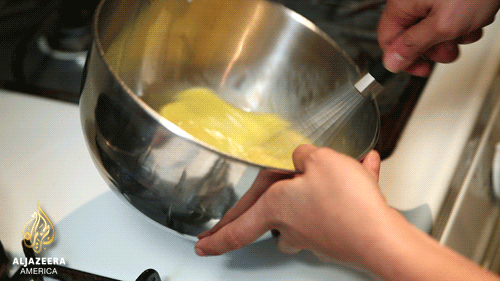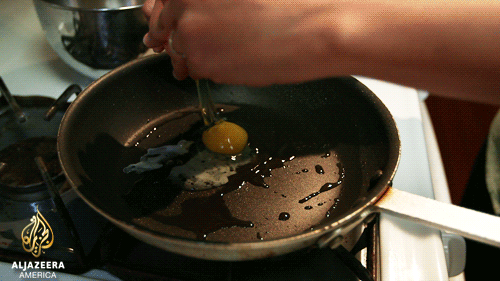My favorite question during Sunday brunch is: how do you like your eggs?
I like them scrambled, but little did I know that this mean protein does much more than satiate my appetite. The scientists and foodies at Hampton Creek Foods, a San Francisco startup that’s reinventing what it means to eat plants for breakfast, clued “TechKnow” in on some surprising facts. First and foremost, an egg has 22 distinct functions.
Josh Tetrick, Hampton Creek’s CEO, and Josh Klein, the company’s director of biochemistry, are on a “search and discovery mission” to see if they can mimic the functions of an egg using plants.
“Of the 1.8 trillion eggs that are laid every year, about a third end up in food products,” Tetrick says. “A part of what we do is to search for plants that are better than the chicken egg in doing all those things.”
They’ve had success with the yellow pea, which is the base for the company’s newest product, Just Mayo.
Here’s a look at six of our favorite ways an egg can make or break a meal.

Aeration
Aeration is a process that forces air through a liquid or viscous solution; it’s all about creating more volume. An egg white is about 90 percent water and 10 percent protein. So, when someone beats an egg white, foam forms trapped air bubbles that increase the height and density of a food. Whipped egg whites can foam to eight times its original volume, giving lemon meringue pie the desired height.
Coating
Eggs are also key to making that croissant look extra tasty in the morning. Slightly beaten eggs can be used as coating, or a wash, for pastries and breads. It adds moisture and prevents a crust from drying out.

Coagulation
When an egg turns from clear liquid to white in your frying pan, that’s an example of coagulation. It’s the process by which protein molecules in the egg are converted from a fluid to a firmer state. A coagulated egg helps bind ingredients together and helps with baking and thickening sauces.
Emulsification
An emulsion is a mixture of two liquids that don’t naturally go together; they have oppositely charged molecular structures that naturally repel each other. Oil and water is a classic example. Introducing an egg into the party can reduce the surface tension and creates the smooth texture you find in sauces and salad dressings.
“Most people, when they think about chicken eggs, they think about a shell that they crack and there's classical music playing. That's not our chicken egg,” Tetrick tells “TechKnow.” “[The chicken egg] builds the muffin together. It makes sure that your cookie doesn't crumble. It makes sure that when you have mayonnaise it's not like a disgusting glob of mayo; it's actually a nice, creamy thing.”
Flavor
Eggs play nicely with other ingredients on a plate. They contain fats that work well with other flavors and provide more texture to a meal.
Shelf life
An egg is very good at keeping things together. Egg proteins can help maintain a product’s moisture and freshness, keeping the texture and chewiness of a baked good or snack.
Watch "TechKnow," Saturdays at 7PM/4PM on Al Jazeera America.
Error
Sorry, your comment was not saved due to a technical problem. Please try again later or using a different browser.